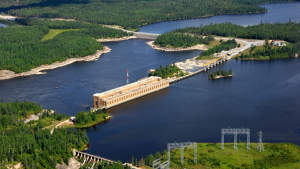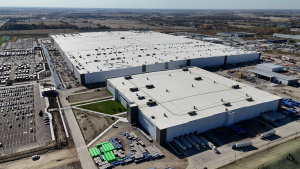OTTAWA — BuildForce Canada forecasts Manitoba’s construction market is set to continue its recovery through 2022 and that its neighbour Saskatchewan appears poised to see another sustained expansion period following a strong 2021. The agency released its 2022–2027 Construction and Maintenance Looking Forward report for the two provinces on March 16, part of a weeklong reveal of national and regional labour market reports.
In Manitoba, new provincial infrastructure spending will offset the winding down of activity at the Hydro Manitoba Keeyask dam project. In the long term, however, construction demands are expected to moderate.
Employment in Manitoba is expected to peak in 2022, corresponding with peak requirements in the residential (up two per cent) and non-residential (up 3.4 per cent) sectors. More moderate growth is expected to the end of the forecast period.
By 2027, these trends will largely offset, leaving overall construction employment almost unchanged compared to the 2021 labour force.
“Historically, Manitoba has benefitted from a younger workforce more than most provinces, and this fact should stand the province in good stead over the forecast period,” said Bill Ferreira, executive director of BuildForce, in a release. “If most of the young workers that exited the workforce during the COVID-19 pandemic return as the economy reopens, and if the industry is able to recruit its fair share of workers from the local population, Manitoba should be able to satisfy its hiring requirements through 2027.”
BuildForce Canada expects that 4,500 workers, or nearly 11 per cent of Manitoba’s current construction labour force, will retire by 2027. At the same time, the industry is expected to attract an estimated 5,400 new workers under the age of 30 from the local population. This trend is extremely positive, said Ferreira, and shows industry efforts to boost recruitment to meet future needs is working.
In Saskatchewan, BuildForce’s labour market projections for the construction and maintenance sector suggest that a recovery in new-housing construction will combine with a provincial capital investment plan to drive construction employment higher in the near term, followed by new mining opportunities driving longer-term growth opportunities.
“Saskatchewan’s construction market is expected to remain on an upward trend through 2023, driven by residential activity, major public expenditures and the anticipated start of a potash mine expansion, a canola processing plant and a natural gas power plant in Moose Jaw,” said Ferreira. “We anticipate that investment will cycle down slightly in 2024 before ramping back up again through the end of our forecast period.”
Such growth may present recruiting challenges. BuildForce anticipates that nearly 5,000 workers, or 13 per cent of Saskatchewan’s 2021 construction labour force, will exit the workforce through retirement in the next six years. Demand growth during this period will require the addition of 1,100 workers, bringing the total recruitment requirement to 6,100 workers between 2022 and 2027.











Recent Comments
comments for this post are closed